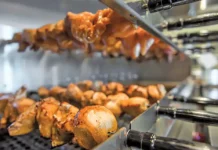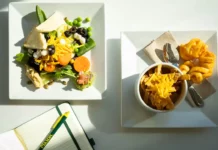
The knee joint sits between the hip and the ankle and when we have to bear weight in standing, walking or stair climbing, it takes a beating. It is more mobile than the hip so when we turn or pivot, we can inflict damage into the knee joint quickly. It is a hinge joint so its range of motion is in our primary mode of movement, which is walking. That means more stress, wear and tear on the cartilage cushions in the knee and a lot of use and abuse in the joint.
The knee joint consists of the femur, tibia and fibula bones. It has two menisci (cartilaginous cushions) that absorb shock, reduce friction and increase congruency between the bone ends. The patella, or kneecap sits in the front, embedded in the patellar tendon. The joint is a ‘hinge’ joint and moves primarily in a forward and backward motion, like a pendulum. There are small accessory motions that allow for quick changes in direction so that we are mobile and agile. It is a large, weight-bearing joint and is subject to overuse as well as acute injury.
Causes of knee joint pain can be from basic wear and tear, or osteo  arthritis as well as misalignment, trauma or sports injuries. Prolonged standing, stairs, squatting and even going up onto your toes to reach overhead can all damage your knee joint.
arthritis as well as misalignment, trauma or sports injuries. Prolonged standing, stairs, squatting and even going up onto your toes to reach overhead can all damage your knee joint.
Tightness or weakness of the surrounding muscles can lead to poor alignment and pain. When the joint is used all day, it can lead to damage of the structures inside the joint.
Slips, trips, pivots and awkward landing can cause pain, muscle dysfunction and injury. Sports play, especially when you are not conditioned can lead to acute injury. The load demanded on the joint without the appropriate strength and flexibility will lead to joint trauma and significant pain, swelling and inflammation.
Physical Therapists are the best professionals to help you get through a knee injury. We can appropriately diagnose your condition and educate you on what to do and what not do during each phase of your injury. It is crucial to perform an exercise correctly as well as know when to use the additional tools. We also apply manual therapies to help restore joint mobility as well as relieve pain and swelling. If our conservative measures are not warranted, we can refer you out to the appropriate medical professional who will further recommend their solutions.
Here’s how to take care of your knee:
Initially, it is best to rest the knee joint after acute injury or sudden pain. That means minimizing your weight bearing as much as possible. Use the PRICE Principle: Protect, Rest, Ice, Compress and Elevate. This will help significantly when you have to be in the kitchen.
Protect-use a knee brace or ace wrap to minimize compressive forces and reduce pain when on your feet.
Rest-get off your feet! Take sit down breaks, if you can. Ice-wrap some ice around your knee during your shift and definitely at the end of your work day. Compress-use a compression sleeve to reduce swelling, pain and add support. Elevate-the knee must be above heart level to really reduce swelling but during your day when you sit, prop it up on a chair with your ice pack to reduce pain and relieve pressure on the joint.
Additional tools to use would be soft tissue mobilization, ice or heat application, over the counter (OTC) medication and exercise. One can self-massage, either using an assistive device like a foam roller, self-roller massage e.g. The Stick, or your hands. It doesn’t have to be deep, but you need to apply pressure from the foot back toward the heart to eliminate the swelling in the knee joint and release the muscle tightness. Ice should be used for significant pain or swelling; heat can be applied to the surrounding soft tissues if they feel very tight and stiff. OTC medications can be used to reduce inflammation and pain, but please check with your physician before taking any medications if you have any other conditions or any issues with your gastrointestinal tract.
Simple exercises like stretching of the calves, hamstrings, quadriceps and gluteals can reduce pressure in the knee joint. If your injury allows you to move with minimal pain, you can even try multi-joint, multi-muscle exercises like squats or step ups in a shallow range of motion. This will allow your muscles to work and help pump excess swelling out of the area and increase stability around the joint. But use your common sense, if anything doesn’t feel quite right and if it increases your pain during or after, then you should not do it.

It’s best to seek out instruction from a Physical Therapist, especially for the exercises. Physical Therapists will educate you about your work day, work conditions and how to get through your aches and pain. We know you are dedicated in your work and being injured is tough on the job. So be smart; try the above tools if you have knee pain and if it doesn’t go away, seek out medical advice.
























Comments are closed.